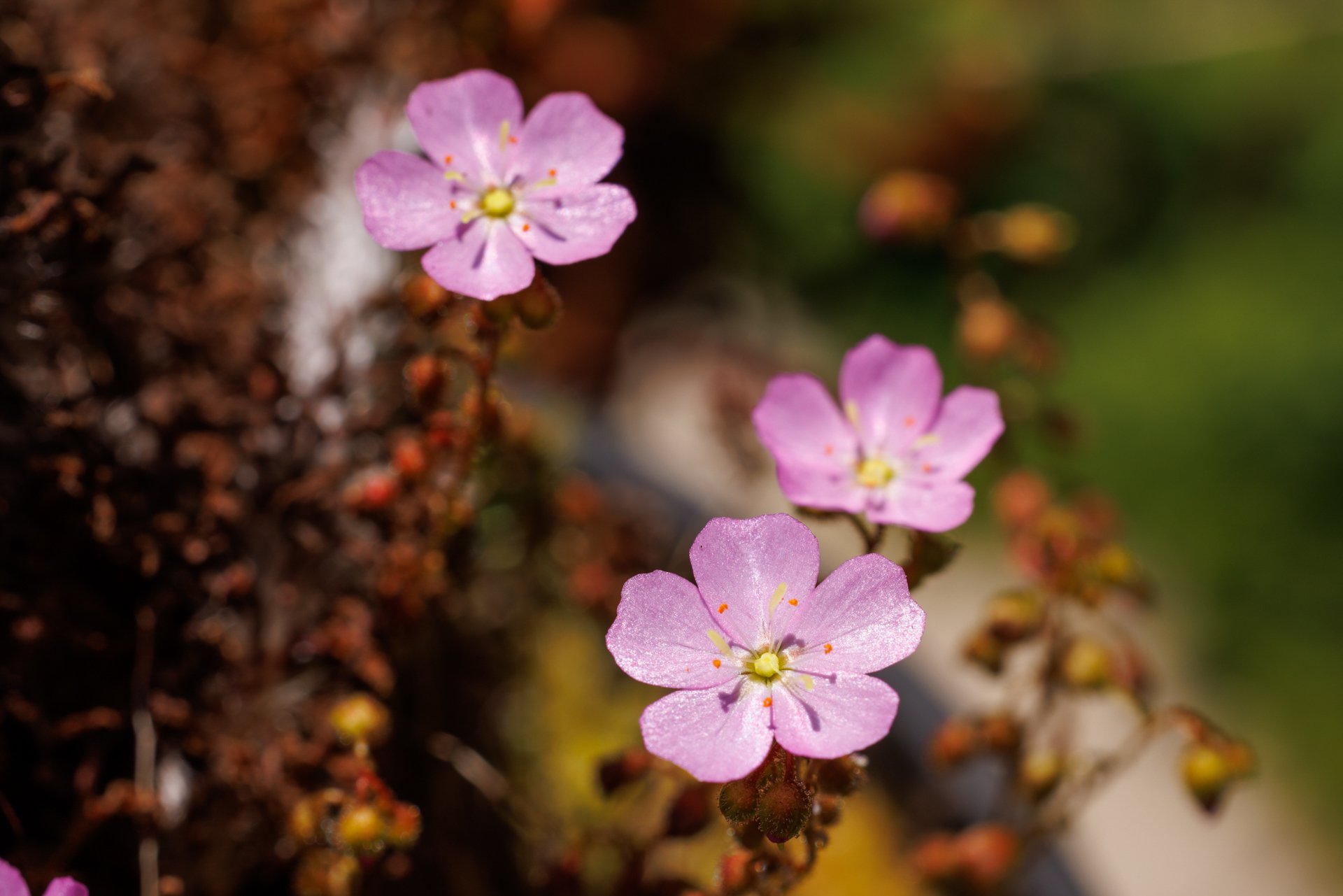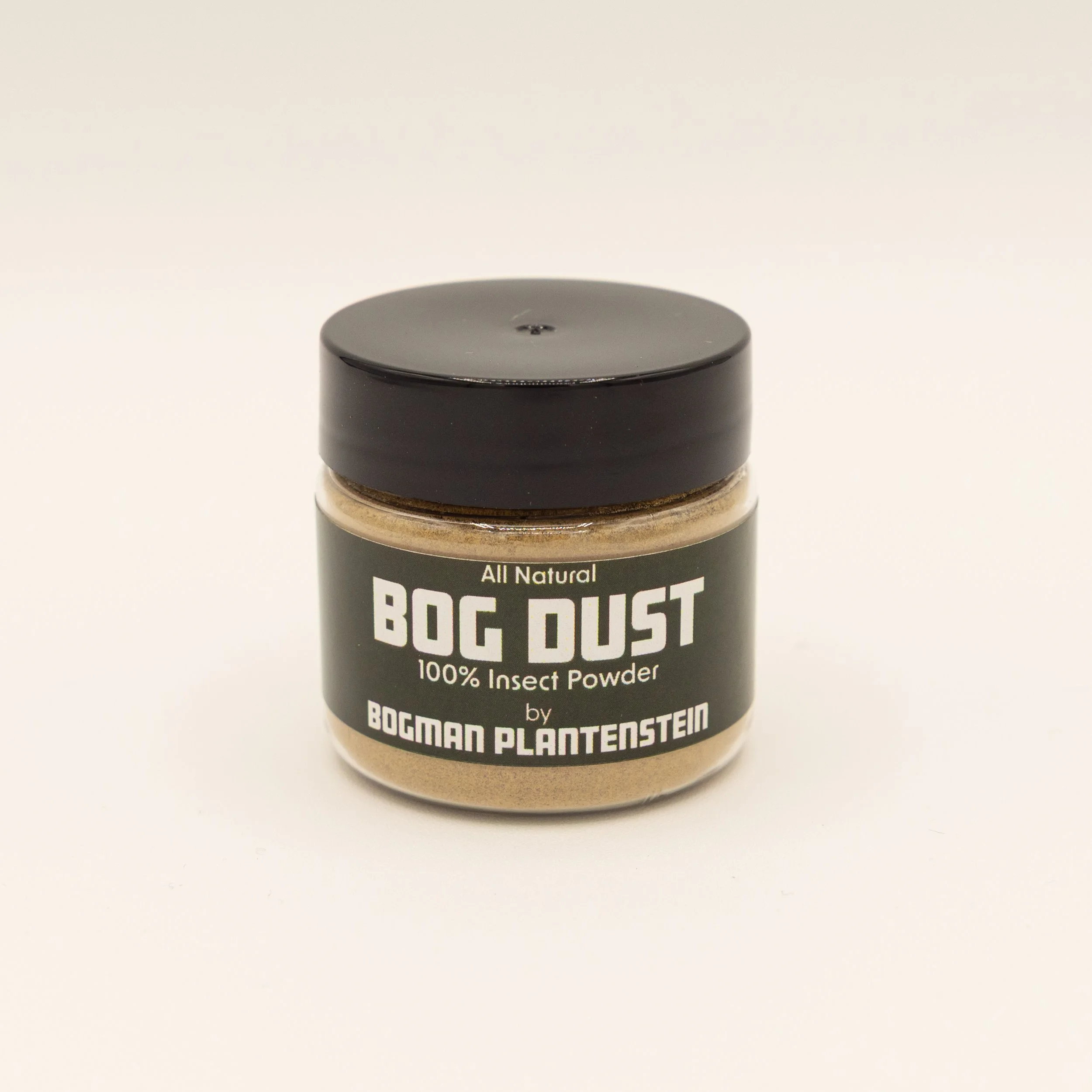 Image 1 of 10
Image 1 of 10

 Image 2 of 10
Image 2 of 10

 Image 3 of 10
Image 3 of 10

 Image 4 of 10
Image 4 of 10

 Image 5 of 10
Image 5 of 10

 Image 6 of 10
Image 6 of 10

 Image 7 of 10
Image 7 of 10

 Image 8 of 10
Image 8 of 10

 Image 9 of 10
Image 9 of 10

 Image 10 of 10
Image 10 of 10











GEMMAE - Drosera omissa x pulchella
Description
Drosera omissa x pulchella is a beautiful, vigorous pygmy sundew hybrid with massive leaves (for pygmies) and long dewy tentacles. The bright green petioles terminate with teardrop shaped lamina with long, dense tentacles. This hybrid readily flowers with large, light pinkish-purple flowers. It flowers more frequently than any other Pygmy I grow, often flowering for several months of late spring, summer, and early fall. Definitely one of the easiest, more resilient, and fastest growing pygmies. It grows rosettes of leaves flat on the ground, though over time it can accumulate a short stump underneath the fresh growth.
The tentacles can curl in response to food in under 1 minute! Pygmy sundews are some of the fastest moving sundew species.
As a pygmy sundew, it will produce ‘gemmae’ which are tiny modified leaves that appear as geometric circles of buds in the center of the growing point each fall. Each gemma can detach from the main plant and rapidly grow into a new plant (much faster than planting seed).
Drosera omissa x pulchella produces medium, disk-like gemmae for its size that are around 1 mm in diameter. Adjust the photoperiod to be 9-10 hours in winter, gradually cycling to 14-15 hours in summer. They require proper lighting cues to produce gemmae and to flower in spring.
WINTER SHIPPING: Cold winter temperatures (<40F) require heat packs which will be automatically included with the shipment if necessary.
Gemmae
Drosera omissa x pulchella Gemmae (15+ gemmae)
These are GEMMAE and not fully grown plants. Gemmae are tiny modified leaves that bud off the mother plants and each one can rapidly grow into an adult plant!
They are very easy to germinate and will grow much faster than seeds. Simply place them on the surface of moist soil and keep humid. Within about a week, they will send out a tiny root and begin to develop carnivorous leaves. In several months, they can be flowering size! Truly an incredible adaptation that is extremely rare in flowering plants!
You will receive 15+ gemmae folded into a wet paper towel in a bag. Plant them as soon as possible and keep in a high humidity environment. After they have developed their first few leaves, slowly acclimate to lower humidity over the next couple weeks. I often use a baggie over the top of the pot and cut off about 0.5” of the corners. After they have a couple leaves, progressively open the corners more until eventually taking off the bag after a few weeks. These want strong light, even as gemmae (though slightly less than when adults).
Growing Information
Climate: Mediterranean (SW Australia). 40-100F, low to moderate humidity.
Light: Full Sun or 20W per sq ft LED light. Pygmy sundews love bright light.
Water: Distilled or Reverse Osmosis water. Sitting in 0.5”-1” of water using tray method.
Soil: 40% Peat: 60% Perlite/Sand is a good mix. Pygmy Sundews like well draining soils. Rinse media with distilled or reverse osmosis water to remove excess salts.
Feeding: Feed leaves with Insect Powder every 2-4 weeks.
Add an addon gemmae kit (Pygmy Sundew Soil + Pot + Tray) to combine with these gemmae for everything you need to get started. Just add water and light!
Description
Drosera omissa x pulchella is a beautiful, vigorous pygmy sundew hybrid with massive leaves (for pygmies) and long dewy tentacles. The bright green petioles terminate with teardrop shaped lamina with long, dense tentacles. This hybrid readily flowers with large, light pinkish-purple flowers. It flowers more frequently than any other Pygmy I grow, often flowering for several months of late spring, summer, and early fall. Definitely one of the easiest, more resilient, and fastest growing pygmies. It grows rosettes of leaves flat on the ground, though over time it can accumulate a short stump underneath the fresh growth.
The tentacles can curl in response to food in under 1 minute! Pygmy sundews are some of the fastest moving sundew species.
As a pygmy sundew, it will produce ‘gemmae’ which are tiny modified leaves that appear as geometric circles of buds in the center of the growing point each fall. Each gemma can detach from the main plant and rapidly grow into a new plant (much faster than planting seed).
Drosera omissa x pulchella produces medium, disk-like gemmae for its size that are around 1 mm in diameter. Adjust the photoperiod to be 9-10 hours in winter, gradually cycling to 14-15 hours in summer. They require proper lighting cues to produce gemmae and to flower in spring.
WINTER SHIPPING: Cold winter temperatures (<40F) require heat packs which will be automatically included with the shipment if necessary.
Gemmae
Drosera omissa x pulchella Gemmae (15+ gemmae)
These are GEMMAE and not fully grown plants. Gemmae are tiny modified leaves that bud off the mother plants and each one can rapidly grow into an adult plant!
They are very easy to germinate and will grow much faster than seeds. Simply place them on the surface of moist soil and keep humid. Within about a week, they will send out a tiny root and begin to develop carnivorous leaves. In several months, they can be flowering size! Truly an incredible adaptation that is extremely rare in flowering plants!
You will receive 15+ gemmae folded into a wet paper towel in a bag. Plant them as soon as possible and keep in a high humidity environment. After they have developed their first few leaves, slowly acclimate to lower humidity over the next couple weeks. I often use a baggie over the top of the pot and cut off about 0.5” of the corners. After they have a couple leaves, progressively open the corners more until eventually taking off the bag after a few weeks. These want strong light, even as gemmae (though slightly less than when adults).
Growing Information
Climate: Mediterranean (SW Australia). 40-100F, low to moderate humidity.
Light: Full Sun or 20W per sq ft LED light. Pygmy sundews love bright light.
Water: Distilled or Reverse Osmosis water. Sitting in 0.5”-1” of water using tray method.
Soil: 40% Peat: 60% Perlite/Sand is a good mix. Pygmy Sundews like well draining soils. Rinse media with distilled or reverse osmosis water to remove excess salts.
Feeding: Feed leaves with Insect Powder every 2-4 weeks.
Add an addon gemmae kit (Pygmy Sundew Soil + Pot + Tray) to combine with these gemmae for everything you need to get started. Just add water and light!
Drosera omissa x pulchella responding to fish food. Video is 10x speed, but you can definitely see it moving with your eyes! It only takes 1 minute for the outer tentacles to pull in the food.




